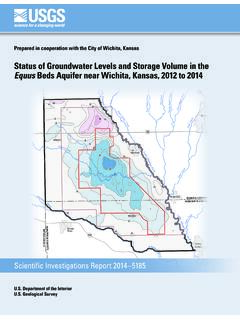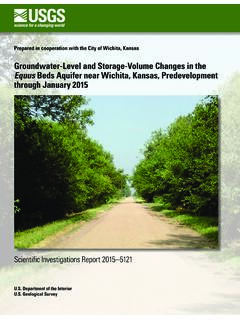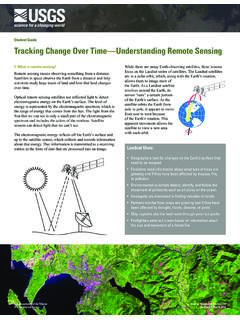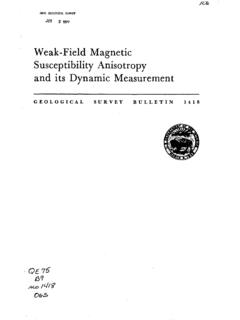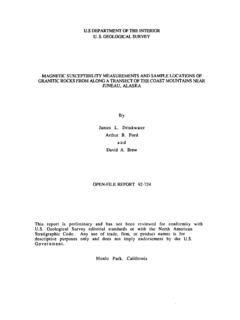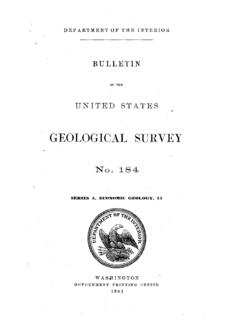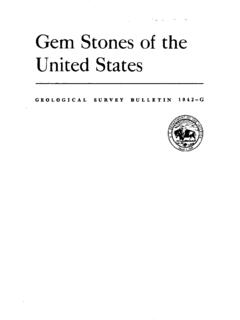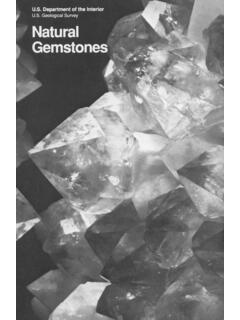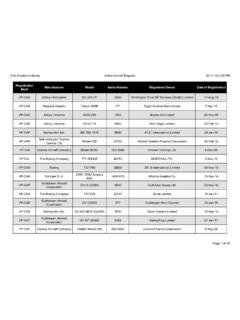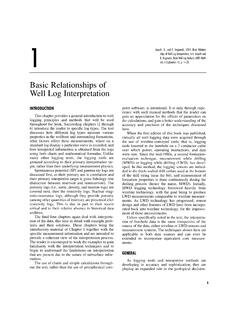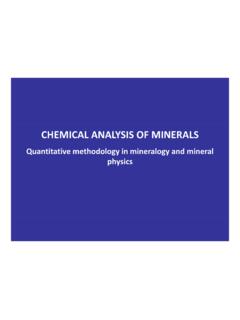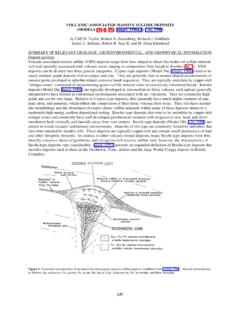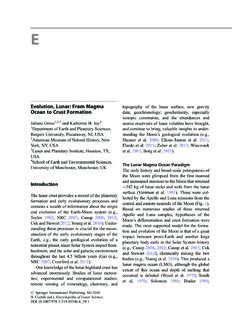Transcription of 11. Hydrothermal Alteration - USGS
1 11. Hydrothermal AlterationBy Pat Shanks III11 of 21 Volcanogenic Massive Sulfide Occurrence ModelScientific Investigations Report 2010 5070 Department of the Geological Department of the InteriorKEN SALAZAR, Geological SurveyMarcia K. McNutt, Geological Survey, Reston, Virginia: 2012 For more information on the USGS the Federal source for science about the Earth, its natural and living resources, natural hazards, and the environment, visit or call 1 888 ASK an overview of USGS information products, including maps, imagery, and publications, visit order this and other USGS information products, visit use of trade, product, or firm names is for descriptive purposes only and does not imply endorsement by the this report is in the public domain.
2 Permission must be secured from the individual copyright owners to reproduce any copyrighted materials contained within this citation:Shanks III, Pat, 2012, Hydrothermal Alteration in volcanogenic massive sulfide occurrence model: Geological Survey Scientific Investigations Report 2010 5070 C, chap. 11, 12 among Alteration , Gangue, and Ore ..169 mineralogy , Textures, and Rock Matrix Assemblages and Zoning Patterns ..170 Alteration in Modern Seafloor Volcanogenic Massive Sulfide Systems ..170 Alteration Zoning in Ancient Volcanogenic Massive Sulfide Deposits.
3 173 Lateral and Vertical Dimensions ..175 Alteration Intensity ..175 References 11 1. Representative cross sections of Alteration related to Hydrothermal activity or fossil Hydrothermal activity on the modern seafloor ..172 11 2. Representative examples of Alteration zoning in volcanogenic massive sulfide deposits ..174 11 3. Fluid flow modeling showing water/rock ratios during Hydrothermal circulation at A, the Panorama volcanogenic massive sulfide district and B, beneath the seafloor at the Lau Basin Hydrothermal system ..176 11 4.
4 Graphs showing geochemical techniques for quantifying Hydrothermal Alteration effects using (A) the Gresens mass balance approach and (B) the Alteration box plot approach ..177 Table 11 1. Diagnostic minerals in hydrothermally altered volcanogenic massive sulfide deposits at different metamorphic grades ..171 The geochemical reactions that produce Hydrothermal Alteration in host rocks of VMS deposits are critically important for a number of reasons. First, three-dimensional distributions of Hydrothermal Alteration zones are produced by circulating Hydrothermal fluids and thus provide evidence for pathways of fluid travel and geochemical evidence for the physical and chemical conditions of Alteration .
5 The chemical and mineralogical distributions of Hydrothermal Alteration zones are generally the only direct evidence of fluid circulation patterns related to VMS ore formation. Second, systematic arrangement of Hydrothermal Alteration zones, and recognition of this arrangement, may provide information useful in mineral exploration and may in some cases provide vectors to undiscovered deposits. Third, Hydrothermal Alteration can provide key information on the origin of metallic elements in VMS deposits. For example, depletion of key elements in altered rocks, combined with measured or inferred estimates of the volume of altered rock, can constrain possible sources of ore metals.
6 Finally, identification and recognition of Hydrothermal Alteration assemblages and their zonal relationships in the field may provide important evidence that a terrane under assessment is favorable for occurrence of VMS Alteration varies widely from district to district and among individual deposits, and the literature on this topic is voluminous. A detailed review is beyond the scope of this report; the interested reader is referred to the following summary references and additional citations therein: Slack (1993), Ohmoto (1996), Carvalho and others (1999), Galley and Koski (1999), Large and others (2001a), Herrington and others (2003), Gifkins and others (2005), Peter and others (2007), Galley and others (2007), Gibson and Galley (2007), and Goodfellow (2007).
7 Fortunately, Alteration zones related to VMS deposits do show characteristic zonal arrangements (proximal, distal, comformable) that may be related to fluid flow and water/rock interaction processes (upflow, recharge, burial metamor-phism). In addition, fairly standard Alteration assemblages, defined by Alteration mineralogy , also occur in country rocks around many deposits, and even metamorphosed Alteration zones produce predictable among Alteration , Gangue, and OreOre is traditionally defined as a valuable mineral or chemical commodity that can be extracted at a profit.
8 In VMS deposits, ore generally consists of sulfide or sulfosalt minerals that contain Cu, Pb, Zn, Ag, and (or) Au. Gangue is defined as any noneconomic mineral deposited together with ore; in VMS deposits this means essentially all nonsulfide miner-als (see Hypogene Gangue Characteristics, Chapter 9, this volume) and some Hydrothermal sulfide minerals (typically pyrite or pyrrhotite) that lack economic value. Hydrothermal Alteration is defined as any Alteration of rocks or minerals by the reaction of Hydrothermal fluid with preexisting solid phases.
9 Hydrothermal Alteration can be isochemical, like meta-morphism, and dominated by mineralogical changes, or it can be metasomatic and result in significant addition or removal of elements. Where Alteration is intense, it can result in signifi-cant volume changes such that mass balance approaches using immobile elements are required to fully understand the altera-tion process (Gresens, 1967).Some authors include gangue and Hydrothermal Alteration together (Beane, 1994) but, in the context of VMS deposits, it seems useful to continue distinguishing gangue from altera-tion.
10 Alteration is by definition an epigenetic process that modifies preexisting rocks (or sediments), whereas gangue is generally a syngenetic mineral deposited on or near the seafloor along with the ore minerals. However, distinctions between gangue and Alteration become difficult in cases where VMS mineralization occurred by replacement and open space filling in porous and permeable rocks in shallow zones beneath the some cases, the bulk of the massive sulfide ore may be deposited in shallow subseafloor environments. In this mode of mineralization, Hydrothermal fluids flow into highly permeable, high-porosity rocks, where sulfide precipitation is triggered by mixing with cold ambient seawater in the pore space.
